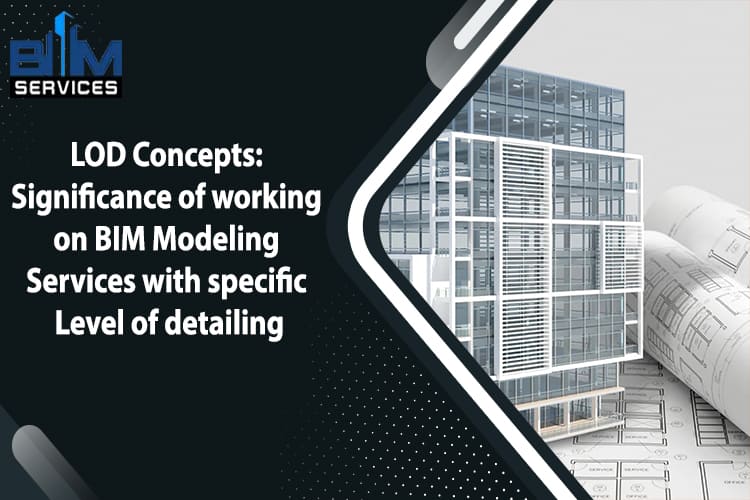LOD Concepts: Significance of working on BIM Modeling Services with specific Level of detailing

The Level of Development (LOD) system stands for “Level of Detailing”. This terminology is to define the amount of information or building data that needs to be placed in any BIM Model. This determines the model type and purpose with which a Virtual Construction Model is developed. For example, a 3d presentation model usually does not need specific information about the materials or quantities while a detailed model developed for clash detection of construction drawings needs accurate data with material specifications, type, dimensioning etc. The unit that denotes these difference in detailing are called “LOD”.
While we worked in the past and initially when BIM Modeling was a lesser known technology, there were no such units that could measure the accuracy of a model. Later, when Virtual construction modeling services became a known name and started gaining precedence over traditional construction methods it became mandatory to introduce a basic standard guideline to determine the requirements. As it was getting very confusing and expensive because irrespective of the requirement all the 3d models were developed with all details. It became an expensive process and a tedious one too.
Later the industry came up with a concept of “Level of Detailing” which segregated the models depending upon their needs.
Level of Detailing
- Conceptual Design: LOD 100
- Design and Development: LOD 200
- Final Design: LOD 300-350
- Construction: LOD 400 – 450
- As-Built and Building Operations: LOD 500
What is the primary difference between each LOD standard in BIM Modeling? Well, the primary difference is the detail taken into consideration for the utilization of model for each purpose. It means that if any contractor or Builder is keen on utilizing BIM, he can develop the 3d Model geometry keeping in mind the level of detailing that is required for which purpose.
Let us discuss the definition of LOD in BIM Modeling.
LOD 100: The Model Element might be just a block representation of the items you require. These may not necessarily have well defined 3d geometry. BIM Model created with a LOD 100 just represents the detailing part. It does not show any typical shape of size of the detail.
LOD 200: The Model Element is graphically detailed and given a specific size and shape within the model. Though it does not have any specific detail, like customized families or material specification it still presents the geometry perfectly.
LOD 300/350: This Level of detailing in a BIM Model is mainly used for presentation purposes. This model uses generic Revit families, basic components available in libraries etc. Though we use generic one can get exquisite details of the amount, estimate, shape, area, and so on.
LOD 400/LOD 450: This BIM model is usually developed and contains intricate details that mean fabrication of different components. There will be intricate and custom families, material take-offs, fabrication detailing and shop drawing. This will have high precision in terms of dimensions, geometry, and shape, the cost along with the smallest detail and separate drawings as these are meant for construction.
LOD 500: This BIM Model is necessarily as-built model. This means that the model developed will have all the details as visible on site. These days’ as-built models are developed by converting laser scans to BIM Models. The Model Element is a field checked portrayal (i.e., as-worked) as far as size, shape, area, amount, and introduction.
In conclusion, any company working on BIM Modeling services should focus more on developing the BIM Model based on the requirements each client has. BIM Services India is an Architectural and Engineering Outsourcing Company in India working on BIM Modeling projects by utilizing LOD 100 to LOD 500 standards depending on client needs and requirements